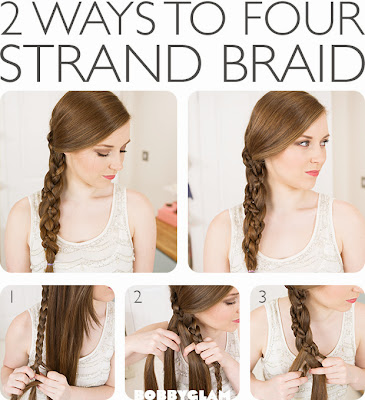A braid (also called plait) is a complex structure or pattern formed by intertwining three or more strands of flexible material such as textile fibres, wire, or hair. Compared to the process ofweaving a wide sheet of cloth from two separate, perpendicular groups of strands (warp and weft), a braid is usually long and narrow, with each component strand functionally equivalent in zigzagging forward through the overlapping mass of the others.The simplest possible braid is a flat, solid, three-strand structure in some countries/cases called a plait. More complex braids can be constructed from an arbitrary (but usually odd) number of strands to create a wider range of structures: wider ribbon-like bands, hollow or solid cylindrical cords, or broad mats which resemble a rudimentary perpendicular weave.Braids are commonly used to make rope, decorative objects, and hairstyles[1] (also see pigtails, French braid). Complex braids have been used to create hanging fibre artworks. Braiding is also used to prepare horses' manes and tails for showing, polo and polocrosse.[2]
Get all the latest hairstyles with braids, braided hairstyle trends, and new braid ideas! Braided hair was one of the hottest hairstyle trends and likely will continue to be a popular choice. There are so many beautiful creations to experiment with in your hair including crown braids, side braids, the milkmaid braid, braided buns, the ponytail braid, the french braid headband, the mermaid braid, braided pigtails, and especially the fishtail braid! Admin- Phynilia Subang
Tired and bored of your old hair braid style? Come and surf with us in our blog with tons of new hair braid style. You can request or ask anyhting to by email it to me at phyniliasubang@gmail.com. Who knows you can be a hair braider for a living.
Monday, January 13, 2014
The History Of Braid
Subscribe to:
Comments (Atom)

